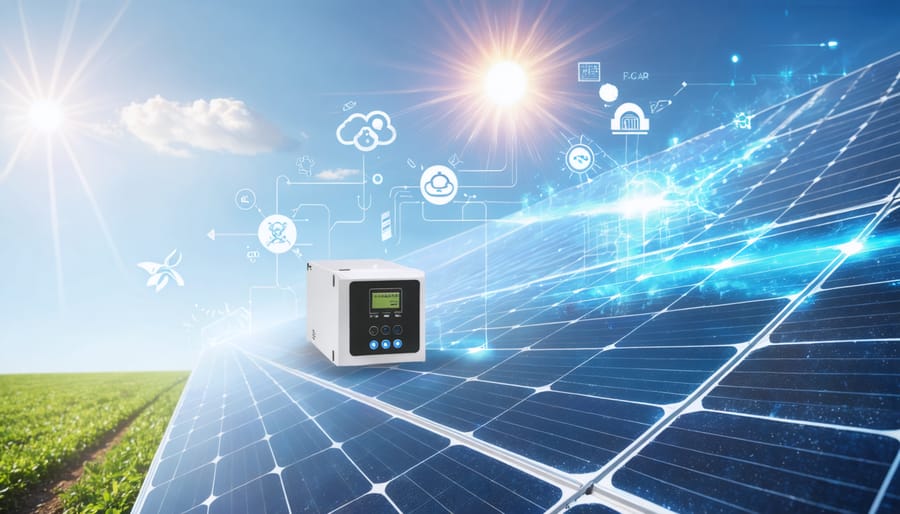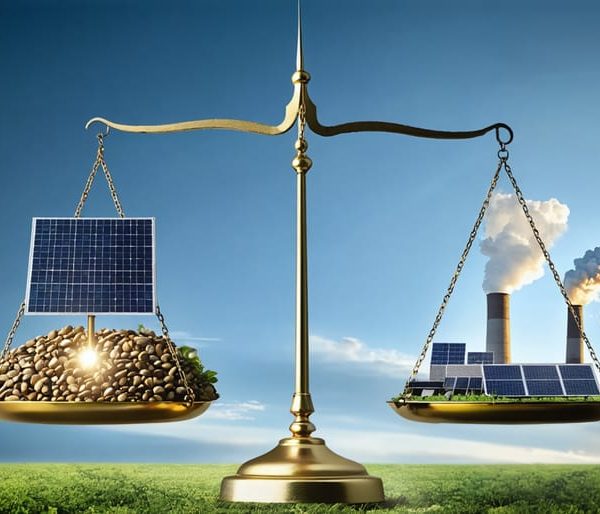Solar Panel Components That Actually Last (And How to Make Them Last Longer)
Transform your home into a clean energy powerhouse with the right solar installation components working together in perfect harmony. From sleek photovoltaic panels that capture sunlight to sophisticated inverters that convert DC power into usable AC electricity, each element plays a crucial role in creating a reliable solar energy system.
Modern solar installations combine durability with cutting-edge technology, featuring weather-resistant panels that can withstand decades of exposure, robust mounting systems that keep everything secure, and smart monitoring solutions that track performance in real-time. These components work together to create a sustainable power generation system that can last 25-30 years with proper maintenance.
Whether you’re considering your first solar investment or upgrading an existing system, understanding these core components is essential for making informed decisions. Today’s solar technology offers unprecedented efficiency, with panels converting up to 23% of sunlight into electricity and microinverters optimizing power production even in partially shaded conditions.
This comprehensive guide explores the essential components of a solar installation, their functions, and how they contribute to a reliable, long-lasting clean energy solution for your property.
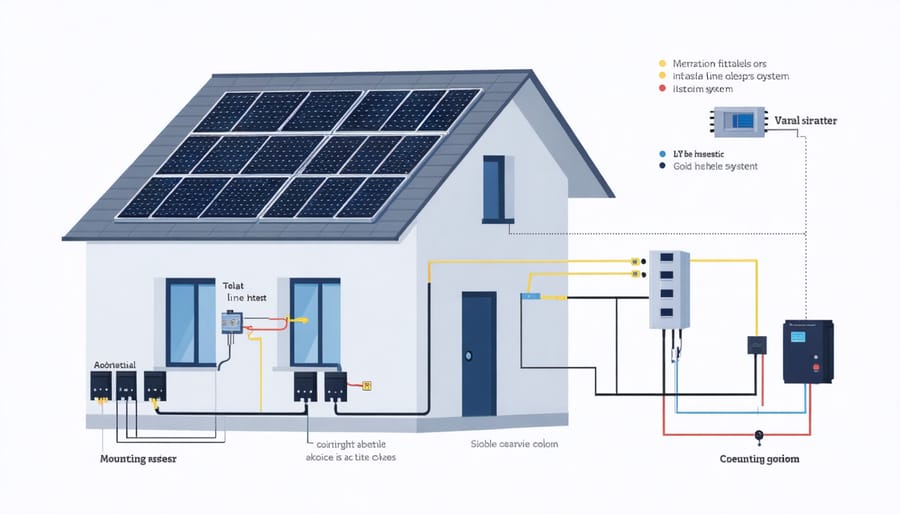
Core Solar Installation Components and Their Expected Lifespans
Solar Panels (25-30 Years)
Solar panels are the workhorses of your renewable energy system, designed to reliably generate clean electricity for 25-30 years. Most quality panels come with a 25-year performance warranty, guaranteeing at least 80% of their original output by the end of this period.
These robust components naturally experience a small decline in efficiency over time, typically degrading at a rate of only 0.5% to 1% annually. This means that after 25 years, a panel that initially produced 300 watts might still generate around 240-255 watts – impressive longevity for any energy-producing technology.
Several factors can influence your panels’ lifespan. Climate conditions play a significant role, with extreme temperatures and severe weather potentially accelerating wear. Regular cleaning and maintenance can help maintain optimal performance, while proper installation with adequate ventilation can prevent unnecessary stress on the panels.
Quality matters significantly – panels from reputable manufacturers using advanced materials and construction techniques often show lower degradation rates and better long-term reliability. When properly maintained and protected from physical damage, many solar panels continue performing well beyond their warranty period.
Inverters (10-15 Years)
Inverters are the heart of your solar power system, converting DC power from your panels into usable AC electricity for your home. Most modern solar inverters last between 10 to 15 years, with premium models potentially extending beyond this range. You’ll typically encounter three main types: string inverters, microinverters, and power optimizers.
String inverters are the most common and cost-effective option, connecting multiple panels in a series. While they’re reliable, their performance can be affected if one panel is shaded. Microinverters, installed underneath each panel, offer better performance in partial shade conditions and typically last longer, with some manufacturers offering 25-year warranties.
To maximize your inverter’s lifespan, regular inverter maintenance is essential. Watch for signs like decreased energy production, unusual noises, or error messages on the display. Most inverters include monitoring systems that help you track performance and catch potential issues early. Keep the area around your inverter clean, well-ventilated, and protected from extreme weather conditions to ensure optimal operation throughout its lifetime.
Mounting Systems (25+ Years)
Solar mounting systems are the unsung heroes of your installation, quietly supporting your panels through decades of weather exposure. These sturdy aluminum and stainless steel racks are engineered to last well beyond 25 years, often matching or exceeding the lifespan of the panels themselves. With proper installation, they require minimal maintenance – just an annual inspection to check for loose bolts and ensure the structural integrity remains intact.
Modern racking systems feature corrosion-resistant materials and protective coatings that prevent rust and deterioration, even in coastal areas with high salt exposure. The most durable systems include built-in wire management solutions and micro-inverter attachment points, reducing the need for additional hardware that could potentially fail over time. While they might be the least glamorous part of your solar setup, mounting systems are crucial for long-term performance and safety.
Factors That Impact Component Lifespan
Environmental Conditions
Environmental conditions play a crucial role in determining how long your solar installation components will last. Temperature fluctuations, weather patterns, and geographical location all significantly impact the performance and durability of your solar energy system.
In regions with extreme temperatures, solar panels and inverters face additional stress. While panels are designed to withstand high temperatures, excessive heat can reduce their efficiency and potentially shorten their lifespan. Cold climates bring their own challenges, with snow accumulation and freeze-thaw cycles potentially affecting mounting systems and wiring.
Coastal areas present unique challenges due to salt air exposure, which can accelerate corrosion of metal components. To protect against weather damage, many manufacturers now use marine-grade materials and special coatings in salt-prone environments.
Rainfall and humidity levels also affect component longevity. While rain helps keep panels clean, high humidity can lead to moisture buildup in electrical components if proper sealing isn’t maintained. Areas with frequent hail or strong winds require more robust mounting systems and impact-resistant panels.
UV exposure varies by location and affects the degradation rate of panel materials and wire insulation. Higher-elevation installations typically experience more intense UV radiation, making quality components with UV-resistant properties essential.
The good news is that modern solar components are engineered with these environmental challenges in mind. Many manufacturers conduct extensive testing under various weather conditions to ensure their products can withstand local climate demands, often backing their confidence with lengthy warranties.
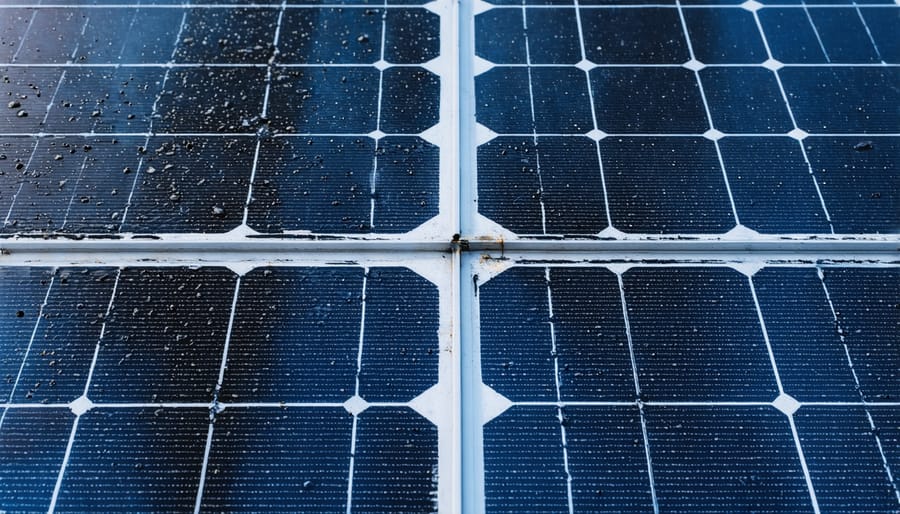
Installation Quality
The quality of your solar installation plays a crucial role in determining how well your system performs and how long it lasts. A properly installed solar system can easily reach its full 25-30 year lifespan, while poor installation practices can significantly reduce system efficiency and longevity. Following proper solar installation safety practices ensures not only optimal performance but also protects your investment.
Professional installers pay careful attention to roof integrity, mounting system alignment, and wire management. Each panel must be securely fastened with appropriate spacing for ventilation and maintenance access. Proper sealing around roof penetrations prevents water damage, while correct wire routing and connection techniques minimize the risk of electrical issues.
The mounting system’s angle and orientation significantly impact energy production. Experienced installers consider local weather patterns, sun exposure, and roof characteristics to achieve optimal positioning. They also ensure proper grounding and surge protection to safeguard against lightning strikes and power surges.
Quality installation extends to the inverter placement as well. Proper ventilation and protection from the elements can dramatically extend the inverter’s lifespan. Similarly, careful attention to junction box connections and conduit installation helps prevent moisture infiltration and electrical degradation.
Many homeowners report that professionally installed systems consistently outperform DIY installations in terms of both energy production and durability. The initial investment in professional installation often pays for itself through improved system efficiency and reduced maintenance needs over time.
Maximizing Component Lifespan
Regular Maintenance Schedule
To keep your solar installation performing optimally, following a regular solar panel maintenance schedule is essential. Here’s a simple timeline to help you protect your investment:
Monthly Tasks:
• Visual inspection for debris, dirt, or damage
• Check monitoring system readings
• Document energy production levels
• Clean panels if necessary (especially during dry seasons)
Quarterly Tasks:
• Inspect mounting hardware and tighten if needed
• Check wiring connections for signs of wear
• Clear vegetation that might shade panels
• Clean any accumulated dirt or bird droppings
Semi-Annual Tasks:
• Detailed inspection of inverter performance
• Test backup batteries if installed
• Check for loose roof attachments
• Inspect weather sealing and conduits
Annual Tasks:
• Professional system inspection
• Thorough panel cleaning
• Electrical connection testing
• Performance evaluation and comparison
• Update monitoring software if applicable
Remember to keep a maintenance log and take photos during inspections. While many tasks can be done yourself, schedule professional inspections annually to ensure everything’s working safely and efficiently. During winter months, pay special attention to snow removal and ice buildup. If you notice any significant drops in energy production, schedule an immediate inspection rather than waiting for the next maintenance date.
Early Problem Detection
Catching potential issues early can save you significant time and money while ensuring your solar installation performs optimally. Keep an eye out for these common warning signs that indicate your components might need attention.
For solar panels, watch for visible discoloration or browning, which often signals internal damage. If you notice a sudden drop in energy production on sunny days, this could indicate panel degradation or connection issues. Cracks, while rare, should be addressed immediately to prevent moisture infiltration.
Your inverter’s display screen is your first line of defense – any error messages or unusual readings warrant investigation. Listen for unusual buzzing sounds, as they might indicate failing components. If the cooling fans seem louder than usual or run constantly, this could signal overheating issues.
For mounting hardware, look for signs of rust or corrosion, especially after severe weather. Loose brackets or shifted panels need immediate attention to prevent wind damage. Check your system’s monitoring app regularly – unexpected performance dips often reveal developing problems.
Take action when you notice:
– Energy production dropping by more than 20%
– Flickering inverter lights
– Loose or damaged wiring
– Excessive heat from any component
– Unusual noises from the inverter
– Physical damage to panels
Remember, professional inspection is recommended at least annually, but addressing these warning signs promptly can prevent minor issues from becoming major problems.
Professional Inspections
Regular professional inspections are crucial for maintaining your solar installation’s optimal performance and longevity. Industry experts recommend scheduling comprehensive inspections at least once every two years, though annual check-ups provide better peace of mind and preventive maintenance opportunities.
During these inspections, certified solar technicians will thoroughly examine all system components, including panels, inverters, wiring, and mounting hardware. They’ll check for signs of wear, loose connections, or potential issues that might affect system efficiency. These professionals use specialized equipment to test electrical output, thermal imaging to detect hot spots, and detailed diagnostic tools to ensure everything is functioning correctly.
Key reasons to schedule professional maintenance include:
– Warranty compliance requirements
– Early detection of potential problems
– Performance optimization
– Safety assurance
– Extended system lifespan
Many solar installation companies offer maintenance packages that include regular inspections, cleaning services, and priority support. While these services represent an additional investment, they typically pay for themselves through improved system efficiency and prevented failures. Professional inspections are particularly important after extreme weather events or if you notice any decrease in energy production.
Consider scheduling inspections during spring or fall when weather conditions are mild, and technicians can safely access your roof. Some installers even offer remote monitoring services, allowing them to track your system’s performance continuously and schedule maintenance only when necessary.
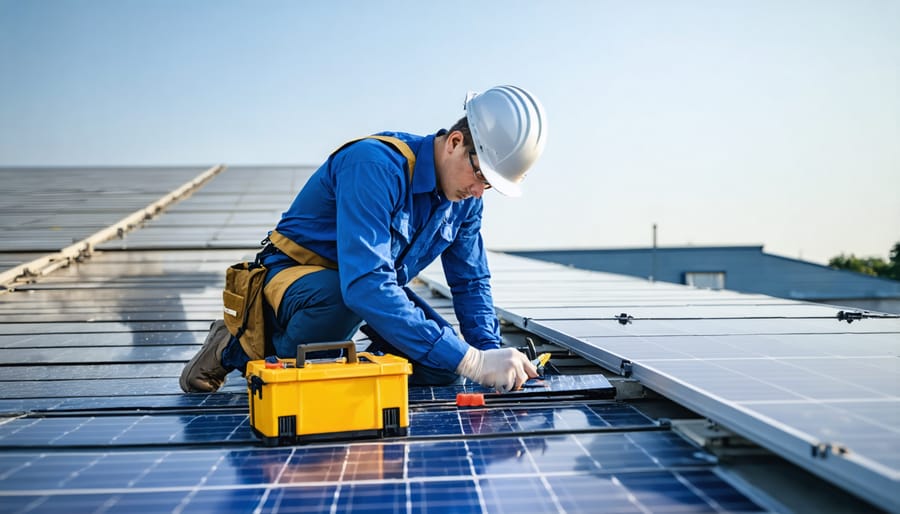
As we’ve explored throughout this guide, understanding and maintaining your solar installation components is crucial for maximizing the return on your renewable energy investment. Each element, from panels to inverters, plays a vital role in creating an efficient and reliable solar power system that can serve you for decades to come.
Remember that quality components are the foundation of a long-lasting solar installation. While premium equipment may require a higher initial investment, it typically offers better efficiency, durability, and warranties that protect your investment over time. Regular maintenance, though minimal, is essential for keeping your system running at peak performance.
By staying proactive with component care, you can significantly extend the life of your solar installation. Simple steps like periodic cleaning, visual inspections, and monitoring system performance can help you identify and address potential issues before they become serious problems. Don’t forget to keep detailed records of maintenance activities and system performance – this information is invaluable for tracking your system’s health over time.
The future of solar energy is bright, and your investment in quality components today will continue to pay dividends tomorrow. As technology advances, many homeowners find that their well-maintained systems consistently outperform initial expectations, delivering reliable clean energy year after year.
Take the next step in your solar journey by scheduling regular maintenance checks and staying informed about your system’s components. Consider working with certified professionals for annual inspections and keep up with manufacturer recommendations for optimal performance. With proper care and attention, your solar installation can provide clean, renewable energy for decades, contributing to both environmental sustainability and your financial well-being.
Remember, every day your solar system operates efficiently is another day you’re reducing your carbon footprint and energy costs. Make component management a priority, and you’ll enjoy the benefits of solar power for years to come.

